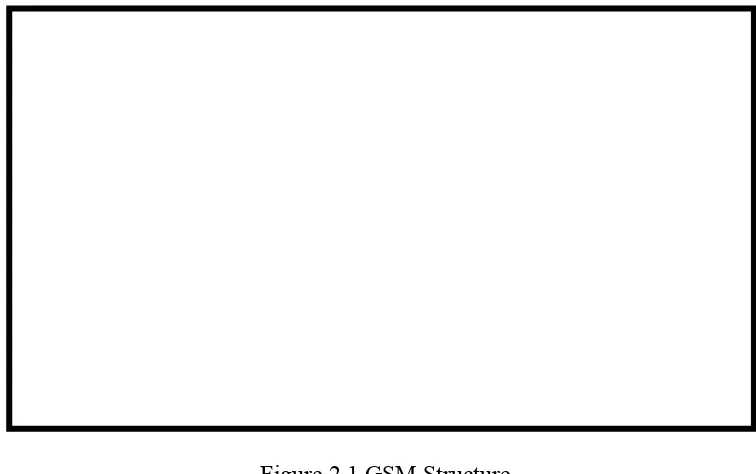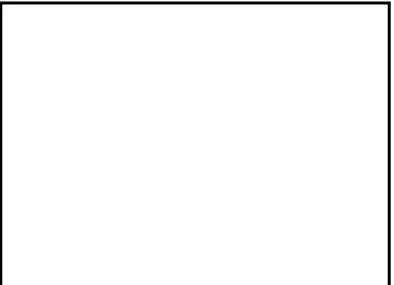UNIVERSITI TEKNIKAL MALAYSIA MELAKA
DESIGN RADIO FREQUENCY PLANNING TOOL USING
MATLAB SOFTWARE
This report submitted in accordance with requirement of the Universiti Teknikal Malaysia Melaka (UTeM) for the Bachelor’s Degree of Electronics Engineering
Technology (Telecommunication) with Honours
by
IELIYANARUS SHAHTZNAS BINTI MOHMAD NASIR B071110036
900228-14-5542
UNIVERSITI TEKNIKAL MALAYSIA MELAKA
BORANG PENGESAHAN STATUS LAPORAN PROJEK SARJANA MUDA
TAJUK: Design Radio Frequency Planning Tool Using MATLAB Software
SESI PENGAJIAN: 2014/15 Semester 2
Saya IELIYANARUS SHAHTZNAS BINTI MOHMAD NASIR
mengaku membenarkan Laporan PSM ini disimpan di Perpustakaan Universiti Teknikal Malaysia Melaka (UTeM) dengan syarat-syarat kegunaan seperti berikut: 1. Laporan PSM adalah hak milik Universiti Teknikal Malaysia Melaka dan penulis. 2. Perpustakaan Universiti Teknikal Malaysia Melaka dibenarkan membuat salinan
untuk tujuan pengajian sahaja dengan izin penulis.
3. Perpustakaan dibenarkan membuat salinan laporan PSM ini sebagai bahan pertukaran antara institusi pengajian tinggi. atau kepentingan Malaysia sebagaimana yang termaktub dalam AKTA RAHSIA RASMI 1972)
(Mengandungi maklumat TERHAD yang telah ditentukan oleh organisasi/badan di mana penyelidikan dijalankan)
Alamat Tetap:
DECLARATION
I hereby, declared this report entitled “PSM Title” is the results of my own research except as cited in references.
Signature : ……….
Author’s Name : ………
APPROVAL
This report is submitted to the Faculty of Engineering Technology of UTeM as a partial fulfillment of the requirements for the degree of Bachelor of Engineering Technology (Bachelor degree in Electronic Engineering Technology (Telecommunication)) (Hons.). The member of the supervisory is as follow:
i
ABSTRAK
ii
ABSTRACT
iii
DEDICATION
To my beloved parents
Kadariyah Binti yup and my dearest sisters. Thank you for your infinite loves.
iv
ACKNOWLEDGEMENT
Alhamdulillah, infinite thanks to Allah S.W.T that I finished my project in time. Without His bless and guidance, I could not complete this project successfully.
v
List Abbreviations, Symbols and Nomenclatures ix
CHAPTER 1: INTRODUCTION 1
2.3.3 Co-Channel Interference 12
vi 2.6.2 Performance of GSM propagation by Vishal and Kulkarni 20
CHAPTER 3 : METHODOLOGY 21
3.1 Project Planning 21
3.2 Project Schedule 23
3.3 Literature Review and Research 24
vii
LIST OF TABLES
2.1 Function of component 19
3.1 Frequency Allocation 24
3.2 Coding Simulation for Propagation 26
3.3 Coding Simulation for Existing Base Station 27
3.4 Coding Simulation for New Site 32
ix
LIST OF ABBREVIATIONS, SYMBOLS AND
NOMENCLATURE
AUC - Authentication Centre
ARFCN - Absolute Radio frequency Channel Number BCH - Brocast Common Control Channel
DCCH - Dedicated Control Channel EIR - Equipment Identify Register
FDMA - Frequency Division Multiple Access FSL - Free Space Loss
GUI - Graphical User Interface GOS - Grade of Service
GSM - - Global System For Mobile HLR - Home Location Registry
ISDN - Integrated Service Digital Network ITU - International Telecommunication Union
MS - Mobile Station
NSS - Network Subsystem
PSTN - Public Switch Telephone Network
TS - Time Slot
TCH - Traffic Channel
1 GSM spectrum availability is very limited because of that, the exiting operator need to share the spectrum frequency. In order to solve this kind of problem a frequency planning is created so it can help the Operator improving coverage, used in the world. GSM 900 spectrum was deployed using 890-915MHz for uplink and 935-960MHz for downlink transmission. In Malaysia spectrum availability for an operator is very limited because of that, there need share spectrum frequency between other operators. The operator in Malaysia such as Telekom Malaysia, Celcom, Maxis, Digi and other. Besides, at the same time this operator need to cater to millions of subscribers. In order to serve millions of this subscriber, RF planning was introduced. RF planning is a process, assign frequency that provides cost effective in term of coverage, capacity and quality. In cellular radio system channel allocation and frequency reuse scheme are very important because it leads to bandwidth saving. Thus, to design this process, the cell has to be known first. Then, the frequency will assign for every cell
INTRODUCTION
2
1.2 Problem Statement
With the increasing popularity of cellular telephony service, the subscriber increase drastically especially in metropolitan areas. This condition results traffic congestion since the existing operator cannot provide enough capacity for the user due to limit frequency spectrum. Because of that frequency interference will affect call performance. The alternative solution to provide operator can serve millions of this subscriber is by using frequency planning. So this frequency will be plan wisely to reduce interference.
1.3 Project Objective
There are three main objectives in this study which lead to project success. The objective of the project is to;
1) Assign frequency planning for GSM 900. 2) Frequency reuse and minimize interference.
3) Develop a simulation tool by using MATLAB software (GUI).
1.4 Project Scope
3 The scope of study includes;
1. Design GSM 900 with propagation model 2. Planning frequency planning
3. Design and develop user-friendly web based Graphical User Interface (GUI) in MATLAB.
4. Simulate the program.
1.5 Thesis Outline
The thesis outline is divided into two parts which is final year project 1 and final year project 2. The outlined as follows:
a) Final Year Project 1 Report.
The introduction is briefly discussed in chapter 1. In this chapter, the background of the research, such as the objectives, problem statement and scope of the project is mentioned. Chapter 2 is about the literature review of previous research regarding on mobile cellular. The methodology and procedures applied in this study are explained in details in chapter 3.
b) Final Year Project 2 Report.
4 This section present about literature review. Findings related to RF planning tool before design the Radio Frequency, need to understand the concept of Cellular system and how it works. The concept of Radio Frequency is described in more detail. In addition, the previous research based on RF planning also included in this chapter.
2.1 Introduction GSM
Global System for Mobile (GSM) is a second generation that replaced first generation analog system’s was developed to solve the fragmentation problem of the first cellular system and it specifies digital modulation technique and network architecture.
2.1.1 GSM Structure
Figure 2.1 illustrates the GSM network and it divides into three main subsystem part which is the Base Station Subsystem, Network switching subsystem and Operation Maintenance Subsystem.
LITERATURE REVIEW
5 Figure 2.1 GSM Structure
2.1.2 GSM Air Interface
This air interface frequency band was assigned by the ITU. Generally there are two types of channel in air interface which is physical and logical. Physical channel are the entire time slot (TS) of the BTS. Since the radio spectrum is limited, TDMA and FDMA technique was used to divide bandwidth among user as possible. The original frequency band for GSM was 25 MHz.The forward and reverse frequency band are generally split into channel each 200KHz wide and they know as Absolute Radio Frequency Channel Number (ARFCN).It denotes forward and reverse channel pair and it separates the frequency 45MHz. TDMA concept can be used for time sharing to cover all the subscriber.
6
2.1.3 Logical Channel
There are two types logical channels within GSM system; Traffic Channel (TCH)
Traffic channel is used to transmit user data which can be voice, fax etc. This traffic can be full duplex or half duplex .Full duplex the data rate is 22.8kB/s and half duplex only 11.4KB/sin order to determine the number of TRX for each cell, it's necessary to estimate the amount of the user demand where this cell is used as best server by considering the amount of traffic and also Grade of Service (GOS).
Control channel
Carry signals and synchnous command between BS and MS. There consist 3 channels BCH, CCCH, DCCH. This research focuses on BCH only. BCH stands for Broadcast Channel Occasionally and monitor by mobile in the neighbour cell so that received a power and MAHO decision may be made by out of cell users.
2.2 Cellular Concept
7
2.2.1 Omni and Sector Antenna
According to Sharma.B (2007), Omni directional antenna can be used in the place where the traffic load very low or it is preferred for low subscriber capacity in rural area. While three sector antenna is preferred for high subscriber capacity in demand area such urban area. With Omni directional antenna it serves 3600 angles
and sectors have covered 1800 ,1200 and also 600.
8
2.2.2 Type of Cell Size
The cell size varies from 10’s meter up to several kilometres and they have different name as follows:
Picocells: 10m - 20m Microcells :>20m – 2Km Macrocells: 2Km – 15KM
The picocells concept applied in a building like the foyer of the theatre or the exhibition Centre whereas the microcells size is applied in the metropolitan area communication system. Macrocellls are used to cover suburban or metropolitan cities.
9
2.3 Frequency Reuse
Generally in GSM900 consist 124 channel carriers. Each carrier carrying 8 time slots. Only 868 call can be made at the same time. This call is not sufficient to meet the growing demand of subscribers over a large area because the entire existing operator shares this carrier and gets only a few of call. To manage this situation a technique called ‘Frequency reuses’ is adopted. Frequency reuses is a set of frequency ranges that located at different locations in the cell. According to Theodore S. Rappaport (2002), Group of cell call as cluster. In one cluster every cell used a different frequency. Figure 2.4 illustrates the concept of frequency reuse, where cell with the same letter uses the same set of frequency.
10 The frequency reuse concept can be illustrated mathematically by considering a system with a fixed number of full duplex channels available in a given area. it can be expressed mathematically as equation (1).
F=GN (1)
Where,
F = No off full duplex cellular channel available in a cluster. G = Number of channel in the cell.
N = No of cell in Cluster.
When a cluster duplicated ‘ m’ times within a given service area, the total number of full duplex channel can be expressed mathematically as eqution (2,3)
C=Mgn (2)
OR
C=mF (3)
Where.
C=Total Channel Capacity in given area. m= No of cluster in given area
11
2.3.1 Cell Reuse Pattern
Generally 7/21 and 4/12 reuse pattern are used. That mean 7 site repeat pattern and 4 site repeat pattern are used. The smaller number of frequency group, the higher carrier per cell. In an other word reduction number of frequency group would allow each site to carry more capacity. However, this reduction frequency group could affect frequency reuse distance which result in lower average C/I distribution. Figure 2.4 and figure 2.5 illustrates the cell reuse pattern.
Figure 2.5 : 7/21 Reuse Patten



